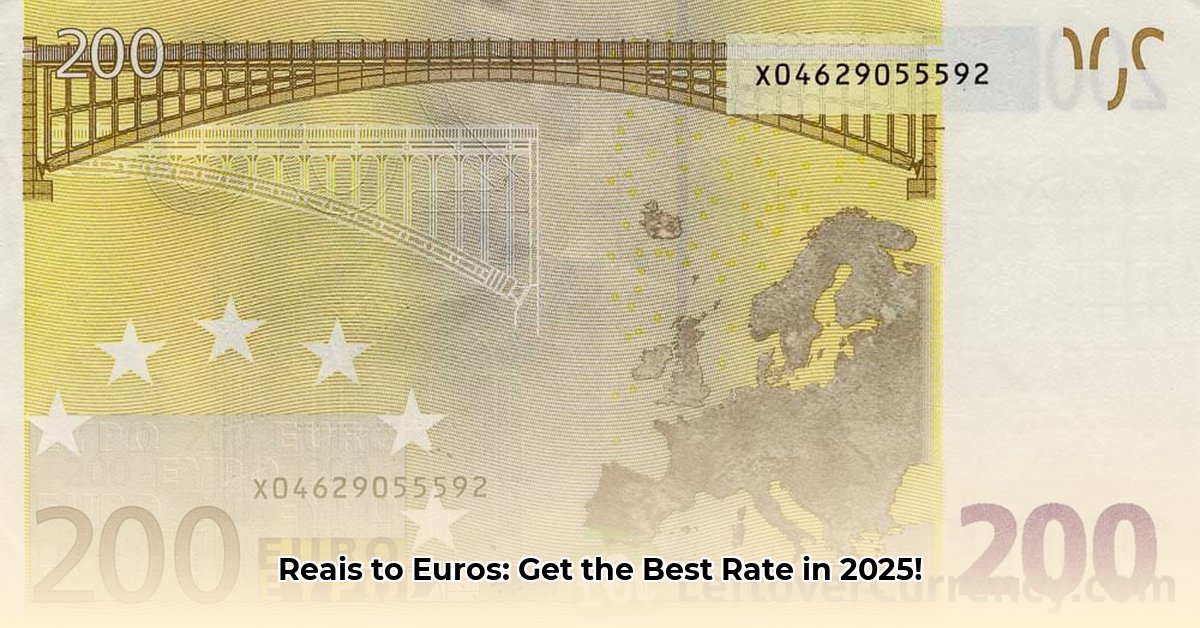
Understanding Exchange Rates: The Key to Smart Conversions
Converting 200 Brazilian Reais (BRL) to Euros (EUR) requires understanding exchange rates – the value of one currency relative to another. These rates are incredibly dynamic, fluctuating constantly due to various economic and geopolitical factors. Think of it like the stock market: prices change frequently based on supply and demand, global news, and speculation. But unlike stocks, you can't always predict with certainty the direction. For other currency conversions, check out this helpful resource: currency converter.
Why is this important? A favorable exchange rate means more Euros for your Reais. An unfavorable one means less. Understanding the factors that influence rates – such as global economic news, international trade, and market speculation – can help you time your conversion strategically, though perfectly predicting the exchange rate is nearly impossible. This guide will help you navigate this dynamic process.
Comparing Conversion Platforms: Wise vs. XE
Two popular platforms for international money transfers are Wise (formerly TransferWise) and XE. Both offer BRL to EUR conversions, but their methodologies and fee structures differ significantly. How do you choose? Let's examine. Don't just look at the advertised rate; examine the total cost.
| Feature | Wise | XE |
|---|---|---|
| Example Rate (1 BRL) | (This will vary daily – check Wise's site) | (This will vary daily – check XE's site) |
| Methodology | Typically uses the mid-market rate (the average of buy and sell rates), adding a small, transparent fee. | Usually displays the mid-market rate but might add hidden fees during the transaction. |
| Fees | Clearly displayed upfront. Usually very low. | May have hidden or less transparent fees; it's essential to check their terms thoroughly before your transaction. |
| Transparency | High; they are very upfront about what fees you will pay. | Lower than Wise. It's possible to receive a final amount that is slightly less than what was originally quoted. |
Key Takeaway: Wise generally offers greater transparency, making it easier to predict your final cost. XE's fees, while potentially lower on the surface, can be less predictable.
Step-by-Step Guide: Converting Your 200 Reais
Let's use Wise as an example. Remember, these steps are illustrative; specific details may vary based on platform updates. Before you begin, do your research and monitor the exchange rate to ensure you're getting the best possible deal. A small difference in the exchange rate can accumulate to considerable savings when transferring larger amounts.
- Create a Wise Account: Register for a free account. This is quick and simple, requiring basic personal details.
- Initiate Conversion: Choose BRL as the source currency and EUR as the destination currency. Input 200 BRL.
- Recipient Details: Accurately provide the recipient's bank details, including the IBAN (International Bank Account Number). Double-check; errors here can delay your transfer.
- Funding: Wise offers various funding options, typically including direct bank transfers. Follow the platform's instructions.
- Review and Confirm: Before confirming, thoroughly review the exchange rate, fees, and the final EUR amount you will receive.
Pro-Tips for Maximizing Your Euros
- Monitor Rates: Regularly check exchange rates using Wise, XE, or other reputable converters to identify favorable trends.
- Set Rate Alerts: Many platforms allow you to set price alerts, notifying you when the rate hits your target.
- Compare Platforms: Always compare multiple platforms to find the best combination of exchange rates and fees. Remember many banks also offer currency conversion services – compare these too!
Conclusion: Making Informed Decisions
Converting 200 Reais to Euros involves understanding exchange rate dynamics and selecting a platform that best suits your priorities. By following this guide and using a service like Wise, prioritizing transparency, you can ensure a smoother and more cost-effective conversion process. Remember that exchange rates are volatile, so continuous monitoring is crucial for optimal results.